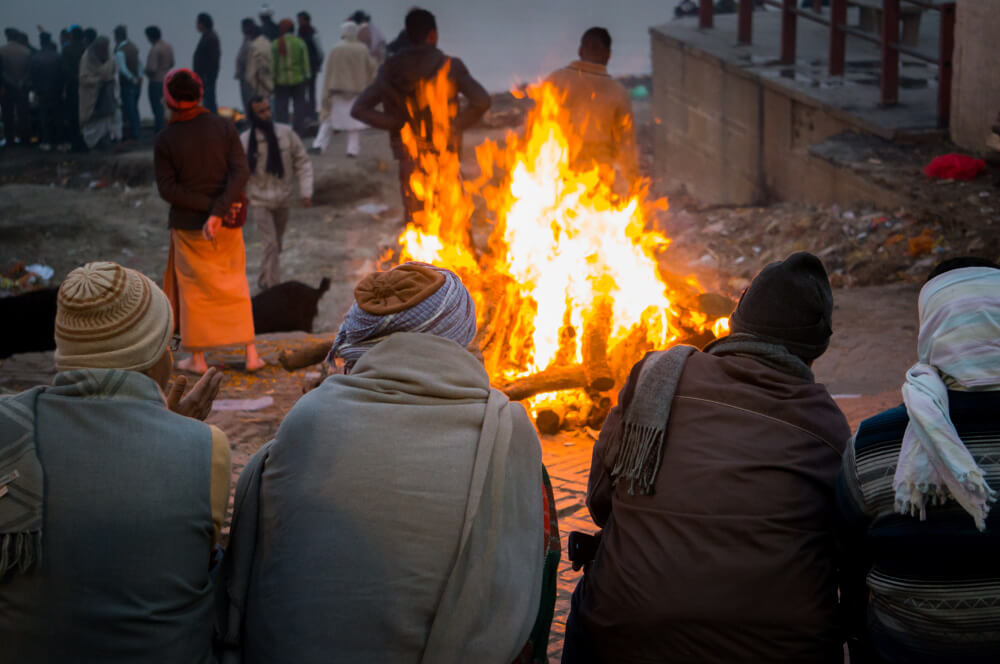November 20, 2021
either/view ⚖️
Last days
To: either/view subscribers
KNOW YOUR RIGHTS – EDITION 15
Right to Die with Dignity

Good morning. Death can be a complicated, messy and difficult thing to deal with but sometimes, it’s better than being plugged into a wall. That’s right guys, we’re going to be talking about something we mortal beings would honestly, rather not. But like Justice D.Y. Chandrachud said back in 2018, “Dying is a part of the process of living.” And when the situation is life or death, it’s better to know your rights about it.
Since March of 2018, Indians have had the right to die with dignity. Not to be confused with the right to “die an unnatural death”, to curtail your natural lifespan – something we do not have the right to do. This means that while active euthanasia, the administration of “lethal compounds” for ending a life, is still illegal in India, passive euthanasia under “strict guidelines” is possible.
Wait, but what is “passive euthanasia”? It is the act of “intentionally causing death by not providing essential, necessary and ordinary care or food and water.” Also known as “negative euthanasia” or “non-aggressive euthanasia”, it calls for removing or discontinuing any “artificial life support system” that was keeping a patient alive.
Okay, and what are the “strict guidelines”? Well, only people who are “suffering from an incurable disease with no chance of recovery to prevent pain and suffering” will be allowed to be passively euthanised. And, it can only take place if mentioned in that patient’s “living will” or Advance Directive. A “living will” is a legal document that allows an individual to state their desires about how they would like to spend their last days alive. This has to be written well in advance and has to have two witnesses and a notary to attest to it. The notary will be the “jurisdictional Judicial Magistrate of First Class (JMFC) appointed by the District judge.”
Who’s allowed to execute this Advance Directive? The Supreme Court says that “an adult of a sound and healthy state of mind” can voluntarily execute the same “without any coercion or compulsion”. Once this is ratified and agreed upon, the medical treatment may be withdrawn or not administered as written in the directive. In that time, no such medical treatment can be given that will eventually delay the process of death.
Here’s what the Advance Directive should contain:
- It should clearly state the decision which relates to the “circumstances in which withholding or withdrawal of medical treatment can be resorted to.”
- It should mention that the executor of the process can revoke the instructions and authority at any time they please.
- It should say that the executor has clearly understood the consequences of following through with such a document, i.e. the living will.
- It should name a guardian or “close relative” who will take over the decision-making process if the executor becomes incapable of making sound decisions themselves.
When it comes to the document itself, the guidelines say that the directive must be recorded and preserved as per the following:
- The JMFC must have a hard and soft copy of the document.
- The Registry of the jurisdictional District Court must be sent one.
- Any “competent officer” of the local government, the Municipal Corporation, Municipality or the Panchayat of the area the executor hails from.
- The family physician, if there is one, must have a copy.
What happens if the hospital just doesn’t listen? After doing everything right, what if the hospital simply does not agree to the executor’s will? Under Article 226 of the Constitution, the executor, their family, the doctors and even the hospital staff are allowed to approach the High Court.
Now, what happens to a patient who doesn’t have an Advance Directive written? In that case, the physician in charge of that patient may inform the hospital they are admitted to. The hospital will then constitute a Hospital Medical Board that will look into the matter and deliberate on the same. Of course, all of this will only happen after the patient in question is properly deemed “terminally ill” and is undergoing prolonged treatment for an ailment that is “incurable” or there remains no hope for one.
As of now, the Supreme Court does recognise an individual’s right to die with dignity as a fundamental right, the rationale being that Article 21 of the Constitution includes one’s right to “live with human dignity”. To the apex court, “life” doesn’t simply mean “animal existence” or “meaningless survival”. Thus, a life with dignity includes the security of a peaceful and dignified death.
To reiterate Justice D.Y. Chandrachud’s words, “Life and death are inseparable. Every moment our bodies undergo change… life is not disconnected from death. Dying is a part of the process of living.” Getting accustomed to this idea and becoming more familiar with our mortality can help, finally, deal with it a lot better. Not just from a personal perspective but from the perspective of our loved ones too.
Also, here’s an article about cats on the internet to distract yourself from existential dread.

